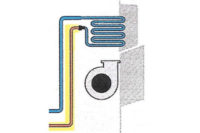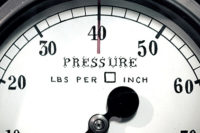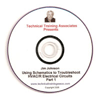It works on the principle that there is a direct relationship between the pressure of the saturated refrigerant in the evaporator and its temperature.
A typical low-pressure control has two setpoints: its cut-in and its differential. In order for the control to work properly, both the cut-in and differential setpoints need to be set properly.
Most manufacturers have stated values for the proper setpoints for their systems. However, these values usually only work well on self-contained or close-coupled systems. If the condensing unit is remotely located, the stated values may cause problems with the cooler.
Setting The Cut-In
On systems where the condensing unit is located a considerable distance away from the evaporator, it is more accurate to first set the cut-in setpoint. The cut-in setpoint should be set to a pressure (temperature) that will allow the evaporator to completely defrost during the off cycle.Since most commercial refrigeration systems work with a coil temperature below 32°F (usually between 20° and 25°), frost will develop on its coils. If this frost is not removed and continues to form, it will eventually completely block the airflow through the evaporator coil, causing the unit to malfunction.
The cut-in value needs to be set to a pressure (temperature) that will not allow the compressor to come on until the coil is completely defrosted.
Typically, if the coil temperature is above 33°F, no frost should be on the coil. However, that is usually too close for comfort. Most system designers recommend that the coil rise to a temperature between at least 36° to 39° before allowing the compressor to cycle on. This will ensure that the coil has been completely defrosted.
Setting The Differential
Once the cut-in pressure has been set, the differential setting must then be set. The differential setting is used to cycle the compressor off at the lowest possible box temperature. The differential setting represents the difference between the cut-in pressure and the cut-out pressure.For example, if the cut-in pressure is set at 40 psig and you want the compressor to cycle off at 15 psig, the differential setting would need to be set at 25 psig (40 psig – 15 psig = 25 psig). The exact cut-out pressure needed to correctly cycle off the compressor may be different from unit to unit. One of the reasons for this is that the pressure drop from the evaporator to the compressor may be different on each unit.
Here’s an easy way to correctly set the differential pressure:
1. Set the differential pressure to an extremely high value. This is a value the suction pressure should never reach under normal operating conditions. A 30-psig setting should suffice.
2. Allow the system to run while monitoring the box temperature. Once the box reaches its lowest desirable temperature, slowly adjust the differential counter-clockwise until the compressor cycles off.
Using this procedure will ensure that the cut-in and differential settings have been properly set and the system will function as intended.
Marchese is owner of Arctic-Air Refrigeration, Pittsburgh, PA.
Publication date: 02/05/2001









